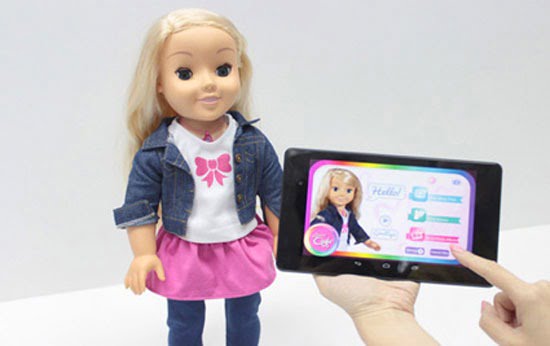
Forget Barbie!!! She may have reproduced mainstream standards for girls, but she’s a 20th-century relic. The future belongs to the “next generation” – and my friend Cayla is a good introduction. Though, as a pioneer, she runs into some problems.
Cayla was equipped with a Bluetooth device that allowed her to “listen” and “talk” to children – something that already happens with “on-screen toys” anyway. It had a micro-camera (in its eyes) and a microphone. Its “sociability” stems from being connected to the internet: depending on what a child says (to it), it searches online (clearly in connection with the company and its algorithms) for the meaning and immediately the best response.
Cayla had started selling well in the US and European markets until a student at Saarland University pointed out that the “doll” could easily be turned into an internet-based spying device by anyone who hacks its not particularly complex software—or even by its own manufacturing company. At that point, the German Federal Office for Information Security stepped in (late last February) and asked toy stores to stop selling Cayla and urged parents not to buy it.
We will not question the sensitivity of the German agency that deemed Cayla a “surveillance toy” that could prove dangerous to children. The fact that the manufacturer is American (Genesis Toys) probably played an additional role. But we have a question: if third-party (and malicious) involvement were ruled out, are we sure that 21st-century first-world parents would not want to monitor their children even through their toys?
We’re not so sure about this…
